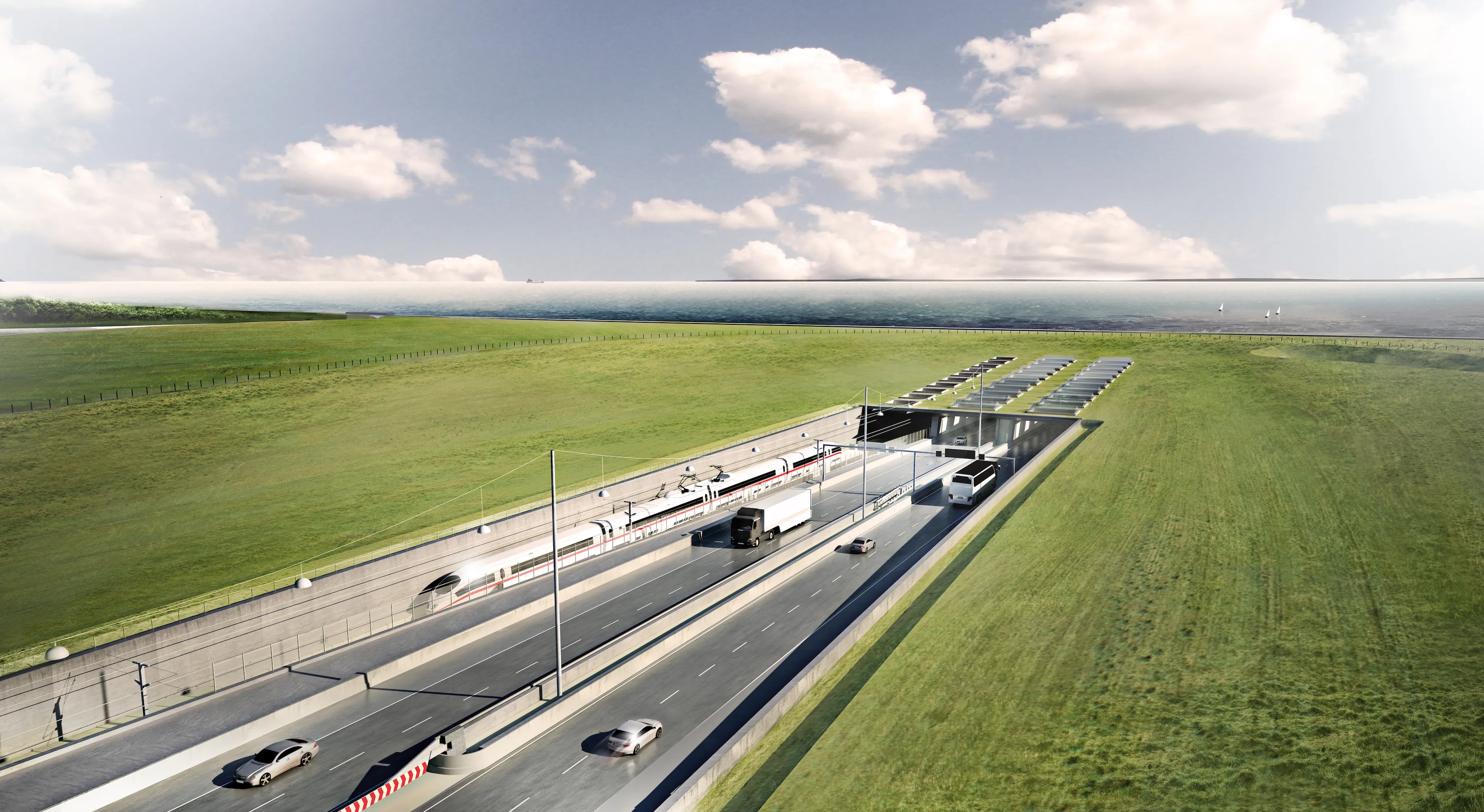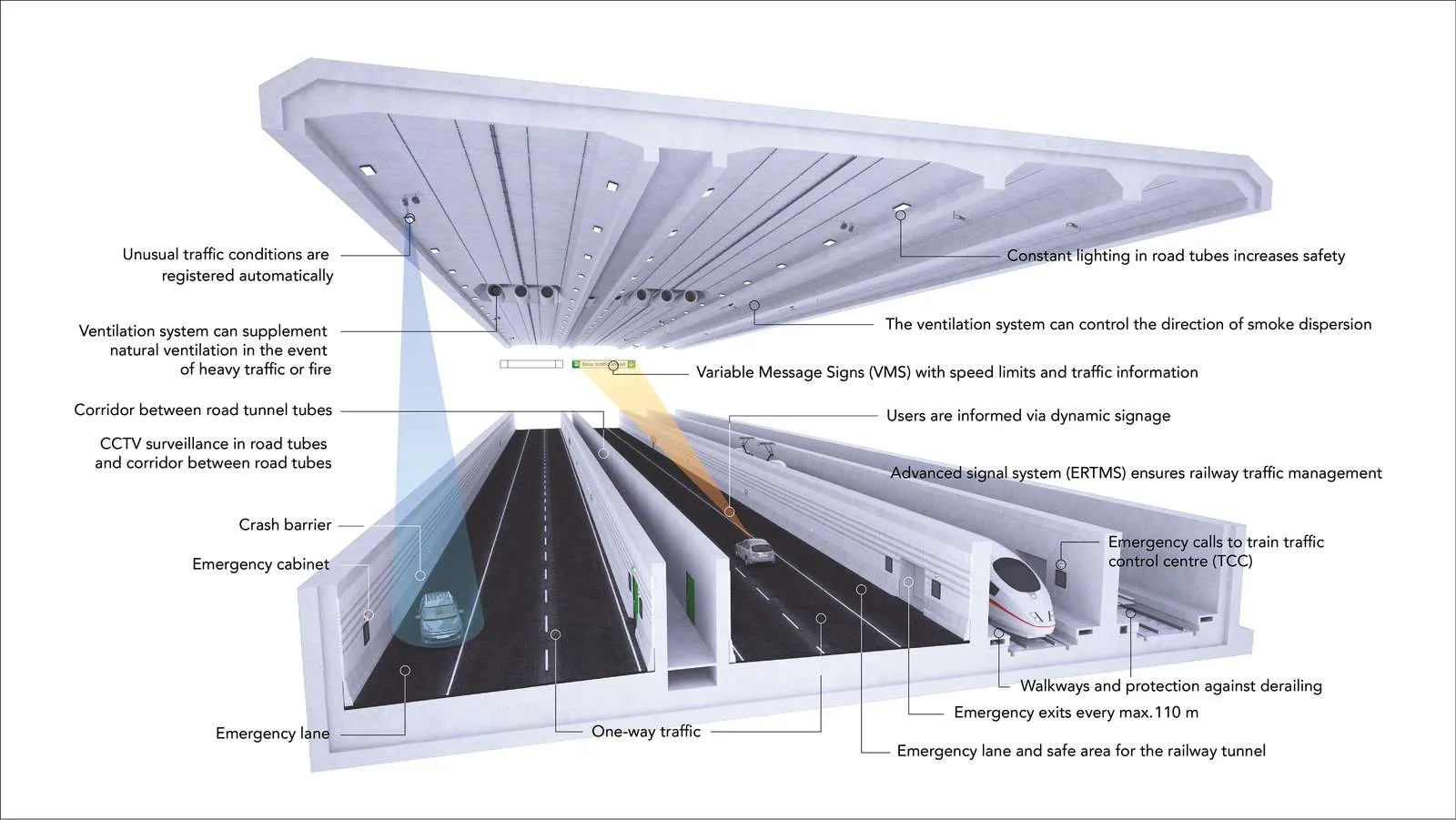The Danish government has shortlisted five consortia for construction of a new Storstrøm Bridge to replace an aging structure.
The cost of the bridge connecting the Danish islands of Zealand and Falstser amounts to nearly €563 million (US$625.7 million) and the bridge will be financed by the government's Infrastructure Fund.
Companies that qualified for the project are a joint venture consisting of Vinci Construction Grand ProjectsSAS, Hochtief Infrastructure GmbH and MT Højgaard; the consortium of St
June 18, 2015
Read time: 3 mins
The 1035 Danish government has shortlisted five consortia for construction of a new Storstrøm Bridge to replace an aging structure.
The cost of the bridge connecting the Danish islands of Zealand and Falstser amounts to nearly €563 million (US$625.7 million) and the bridge will be financed by the government's Infrastructure Fund.
Companies that qualified for the project are a joint venture consisting of3085 Vinci Construction Grand ProjectsSAS, 981 Hochtief Infrastructure GmbH and MT Højgaard; the consortium of Strostrømsbroen Contractors, per Aarsleff, Ed. Züblin AG; the consortium of 975 Rizzani de Eccher, N.V. 1303 Besix S.A. 976 Acciona Infraestucturas; the joint venture Obrascon Huarte Lain, 3093 SK Engineering & Construction; and the joint venture Itinera s.p.a., 3481 Condotte s.p.a., Grandi Laovri Fincosit s.p.a.
The estimated cost of the project includes demolishing the old bridge, is expected to open by 2021, according to a report in the Danish business newspaper Berlingske.
Storstrom Bridge, along with its sister bridge the Kalvø Strøm, were opened in 1985 to ease traffic on an even older Storstrøm Bridge, a 3.2km road and rail arched crossing built in 1937. The newer Storstrom Bridge and Kalvo Strom Bridge are together known as the Faro Bridges because they touch down on the small island of Faro between Zealand and Falstser islands.
The newer high (south) Storstrom bridge is a 1.8km cable-stayed structures across the Storstrømmen straight between Falster and Farø islands. The longest span is nearly 300m and the maximum clearance to the sea is 26m. There is only one row of suspension cables, along the centre of the roadway.
The low (north) Kalvø Strøm bridge is a 1.6km bean structure crossing Kalvø Strøm straight between Farø and Zealand islands. The longest span is 40m and the maximum clearance to the sea is 20m.
When the new Storstrom Bridge was announced in mid-November 2012, the Danish Government was keen finance the project from unused funds destined for the country’s railway network. However, a number of opposition parties wanted to finance the bridge with revenue from the planned Fehmarn Belt link between Denmark and Germany, which is only now starting to be built, as World Highways reported in January.
The $7.5 billion Fehmarn Belt project is an 18km tunnel including two railway tunnels, two motorway tunnels and an emergency tunnel. Construction start is scheduled for later this year and should take between six and seven years.
The cost of the bridge connecting the Danish islands of Zealand and Falstser amounts to nearly €563 million (US$625.7 million) and the bridge will be financed by the government's Infrastructure Fund.
Companies that qualified for the project are a joint venture consisting of
The estimated cost of the project includes demolishing the old bridge, is expected to open by 2021, according to a report in the Danish business newspaper Berlingske.
Storstrom Bridge, along with its sister bridge the Kalvø Strøm, were opened in 1985 to ease traffic on an even older Storstrøm Bridge, a 3.2km road and rail arched crossing built in 1937. The newer Storstrom Bridge and Kalvo Strom Bridge are together known as the Faro Bridges because they touch down on the small island of Faro between Zealand and Falstser islands.
The newer high (south) Storstrom bridge is a 1.8km cable-stayed structures across the Storstrømmen straight between Falster and Farø islands. The longest span is nearly 300m and the maximum clearance to the sea is 26m. There is only one row of suspension cables, along the centre of the roadway.
The low (north) Kalvø Strøm bridge is a 1.6km bean structure crossing Kalvø Strøm straight between Farø and Zealand islands. The longest span is 40m and the maximum clearance to the sea is 20m.
When the new Storstrom Bridge was announced in mid-November 2012, the Danish Government was keen finance the project from unused funds destined for the country’s railway network. However, a number of opposition parties wanted to finance the bridge with revenue from the planned Fehmarn Belt link between Denmark and Germany, which is only now starting to be built, as World Highways reported in January.
The $7.5 billion Fehmarn Belt project is an 18km tunnel including two railway tunnels, two motorway tunnels and an emergency tunnel. Construction start is scheduled for later this year and should take between six and seven years.








